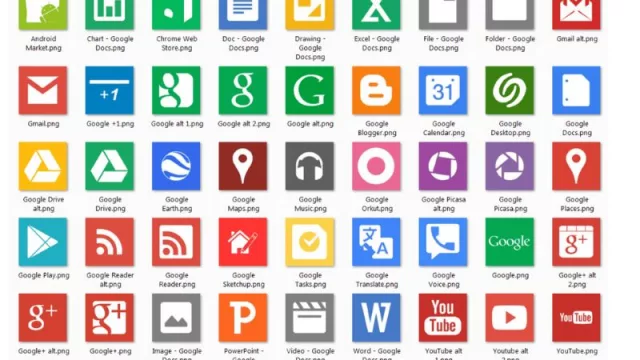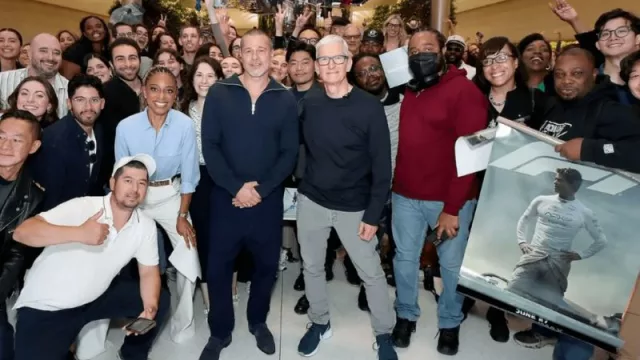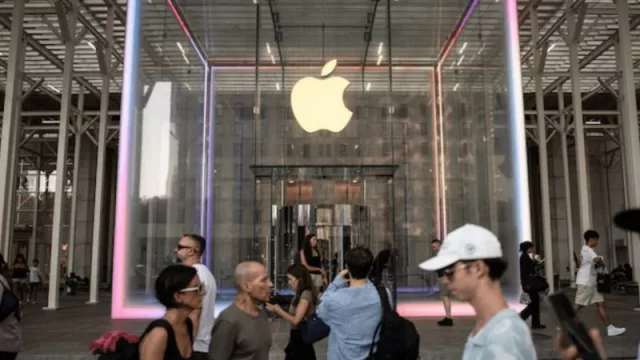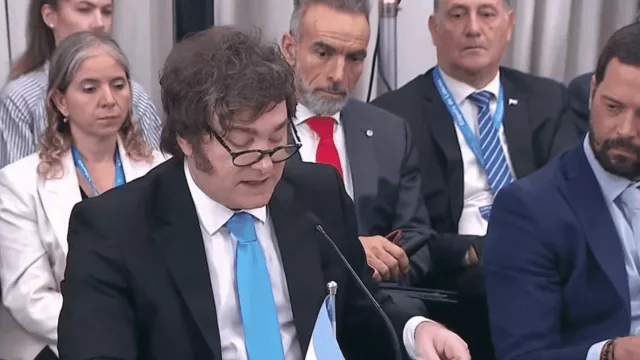Summary and Tips IN
The Hypocrisy in Consulting: An Analysis of Taboo Topics and the Fear of Change
In today’s organizational environment, taboo topics like emotional intelligence, fears, and biases are often rejected or ignored. Despite many companies and institutions seeking external advice to improve their culture and performance, there is a notable dissonance between the desire for change and the resistance to abandon the status quo.
The distortion of hiring resources, methods, agencies, and information that tell us what we want to hear while attacking everything that shows us what we don’t want to see.
The Common Mirror Today:
Even when stating that it’s important, the process of change versus militant beliefs or outdated analytical systems or metrics will delay or weaken the decision to change and sustain it. There will always be a reason to avoid addressing the change process and to postpone it. (Whether it’s the advertising campaign, the comprehensive training program, or the planning process, it is almost always postponed because we are genuinely afraid of facing the truth); thus, our “current reality” will lead us to sideline it.
-
It’s at this point, whether in a state, an organization, or a team, that those responsible for things not improving take the opportunity to distort the "process" situation and generate doubts, fears, nerves, and false projections, to revert to the status quo that creates the problem.
Resistance to change in organizations is a complex phenomenon closely tied to the fears and biases inherent in corporate, organizational, or social culture (in the case of nations). For consultancies or change cycles to be effective, they must have a strategic planning process that supports them over time and the consequences of undergoing that process.
-
The central issue is that, frequently, the most influential voices—those respected and successful in the past—become the main fears and, consequently, the biggest opponents of change. What is known as "change resistors" or "opponents of change" are individuals or groups that oppose transformations or innovations in various settings, whether in organizations, communities, or societies. The problematic aspect is that, many times, they disguise this resistance under a facade of reasoning, caution, care, knowledge, and a sense of identity. Under the pretext of the "common good," they find ways to sabotage any initiative that threatens their comfort zone, beliefs, or dominance.
Examples:
In a very tech-oriented organization today, any generalist, relational aspect, or holistic off-on (phydigital) idea will be rejected. In a very traditional and numerically closed organization, the same will happen. Conversely, in any very dogmatic, ideological, or fanatical organization, any number, empirical evidence, or real data will be systematically denied.
IG: @infonegociosmiami
In any closed system (which will obviously believe it is not), any comprehensive demonstration of further observations will be treated as partial, irrelevant, and will be attacked rationally or culturally.
Let’s remember the biblical analogy, where the best, the most diligent, the most committed, the number one, who wanted no one to suffer (control), is the one who creates sabotage to the integral process of harmony, where the cycle of changes and creations (orderly chaos, a system of multi powers in constant pursuit of generative and creative processes) is attacked, even in the face of the most sacred, like God.
The main challenge today is that, whether in a society, a political party, a club, or a company, these "saboteurs" tend to self-deceive, presenting themselves as defenders of collective well-being and what is best for everyone. (Again, control). And consequently, an eternal cycle of self-reaction wherein the “other” is seen as the one sabotaging well-being or improvement.
It’s Hard to Realize That the Fear, from the Most Beautiful, Most Hopeful Child, the One Most Committed to Good Causes, Becomes Darth Vader in the Face of Pain and Unmanaged Fear.
This lesson repeats daily in startups, companies, political organizations, and institutions.
-
It is crucial that companies, countries, and individuals are willing to confront these taboos and commit to an authentic transformation process. Without self-critique, self-review, and introspection, this is always a cycle of struggle. Only in this way can we advance toward healthier and more productive work and social environments that are real, true, sustainable, and genuinely improve as a society.
The hardest part of the change process is that those who were the cause of stagnation and those who are the agents of resistance realize they are part of the problem and not the other way around, preventing an eternal system of self-deception and struggle.
The current issue lies in the fact that any evidence challenging our reality or beliefs, whether contemporary or inherited from generations, tends to be disqualified, either intellectually, physically, or through demonization. If these tactics fail, evidence is often dismissed as irrelevant or presented as a biased interpretation. This applies to owners, presidents, directors, managers, minorities, as well as employees, teams, sectors, and majorities.
-
In this way, the belief (one of the strongest and most manipulated today) is reinforced that what challenges our biases (self-denied) is biased. This dynamic generates polarization, creating a gap that reflects a limitation in our collective perspective. When one side refuses to acknowledge its mistakes, power becomes fragmented, leading to confrontation between two opposing visions. In this scenario, change and resistance to change become trapped in a constant distortion of the truth (in its most polyveridical form, beyond the perspectives of different observers) across various realities. This phenomenon is a way to avoid confronting the “truth” and, at the same time, to divert attention toward a cycle of sabotage. The gap is not limited to two opposing poles; it is a field where tension is fought and fed, preventing recognition that one side refuses to be an agent of change.
To this end, their position is distorted, and the status quo is altered, presenting themselves as promoters of great transformations when in reality what they seek is to maintain the existing order and avoid change. (Distortion).
The Key Insight That Is Universal, Whether We Accept It or Not:
What if, in reality, whether in the country, the government, the company, the administration of a club, or a consortium, we do not improve or change because, deep down, we do not want to change?
-
Because we believe, consciously or unconsciously, that changing or recognizing that we must change would be so painful, and because we are genuinely so afraid of doing so that we prefer to simulate that nothing different will be better. Thus, we self-deceive and sabotage everything (self-sabotage of change), rationally finding all the supposed mathematical, metric, rational, dogmatic, and cultural evidences to avoid improvement and change.
This phenomenon can be understood through several dimensions.
Taboo Topics in the Environment (Beliefs-Culture)
The enormous confusion in deceiving ourselves that “we are or I am” this way, and that this is our culture, our way of being.
-
Generational fears and deeply rooted beliefs can be considered taboos in many organizations. Speaking openly about vulnerability, insecurity, or fear of failure is often seen as a sign of weakness. This creates an environment where communication is distorted, and employees may feel they cannot express their true feelings or concerns.
The lack of distinction where a nation or person becomes fanatical about a belief is the main obstacle to growth and improvement.
The Hypocrisy of Consultancies or Change
Consultancies are often called to solve problems that organizations are reluctant to face. Companies frequently seek help in areas such as organizational culture or talent management, but in practice, they may not be willing to implement the necessary changes. This phenomenon can be attributed to several factors:
Fear of Change: Organizations may fear that suggested changes threaten their current structure, leading to resistance from upper management and employees.
Comfort in the Status Quo: Many companies prefer to maintain the status quo, as change can involve risks and the possibility of failure. This attachment to the known generates hypocrisy, where help is sought but proposed solutions are rejected.
Lack of Commitment: In some cases, organizations may not be fully committed to the transformation process, resulting in a lack of follow-through on consultancy recommendations.
This occurs in a political party, a nation, a community, a company, a guild, or a club. This fact is universal.
Lack of Commitment: In some cases, organizations may not be fully committed to the transformation process, leading to a lack of follow-up on implementing consulting recommendations.
This occurs in a political party, in a nation, in a community, in a company, in a guild, in a club. This fact is universal.
-
Moreover, there is the aggravated situation of distortion, where for convenience, there is a pretense of wanting to change, while in reality, obstacles are being placed in the way. (Change agent versus agent of destruction or status quo).
Fear, Limiting Beliefs:
The great paradox is that today, both in politics and in private organizations, a common practice is the so-called "distortion," where whether it’s a politician, a citizen, an activist, a manager, or an employee or owner, claims to be doing everything for change, for the better, but actually works against any improvement or amplified truth, as it jeopardizes their status quo (whether they are consciously aware of it or not).
The Role of Emotional Intelligence
Emotional intelligence plays a crucial role in overcoming these obstacles. Fostering an environment where employees, or members of the institution or society, feel safe to express their fears and concerns can be a first step toward change.
-
Not recognizing the dimension of this is to play into the hands of fear manipulators for their own benefit against any improvement. (This is where terrorism, ideological, political, religious fanaticism is nurtured, and also where the counterculture of growth in companies emerges; it’s the famous boycott).
Leaders must be willing to model vulnerability and open themselves up to genuine feedback, which can help dismantle the barriers that prevent honest dialogue.
Towards a Culture of Change:
-
How do we ensure that success is a real, sustained process over time and not a false verticalist and controlling act?
-
To break with the hypocrisy that permeates many consultancies or processes of evolution in societies, it is necessary to cultivate a culture that values openness and change.
-
This implies letting go of false dogmas, beliefs, or double speeches, and for that, a cultural process is vital. (Head of Culture).
Education and Training:
Providing employees with the necessary tools to develop their emotional intelligence and interpersonal skills. For their real empowerment and not for their dependence.
-
This is the same in a country as it is in a company.
Authentic Leadership: Leaders must become champions of change, demonstrating a genuine commitment to organizational transformation. This must be declared.
Dialog Spaces: Creating forums or workshops where employees, citizens, can express their concerns and discuss taboo topics without fear of reprisals.
Development of: Conversational competencies, soft skills, development of the power of distinctions, and multiple intelligences.
-
To achieve this, strategic planning is vital; the plan is a multi-demonstrative shock of all the evidence, whether we like it or not. Therefore, it is essential, whether for a country, a company, or on a personal level, to constantly engage in the entire strategic planning process.
Great Experts, Books, and Valuable Learnings
Daniel Goleman (A timeless, updated classic)
Books: "Emotional Intelligence," "The Emotionally Intelligent Manager."
Focus: Goleman has been fundamental in popularizing emotional intelligence and its impact on leadership and management.
Brené Brown
Books: "The Gifts of Imperfection," "Braving the Wilderness," "Dare to Lead."
Focus: Brown explores vulnerability, courage, and human connection, as well as how these elements affect leadership and organizational culture.
Simon Sinek
Books: "Start With Why," "Leaders Eat Last."
Focus: Sinek focuses on purpose and trust within teams, analyzing how fears can affect organizational dynamics.
Patrick Lencioni
Books: "The Five Dysfunctions of a Team."
Focus: Lencioni identifies dysfunctions that can arise in teams, many of which are related to fear and lack of trust.
Adam Grant
Books: "Originals," "Think Again."
Focus: Grant addresses creativity and how challenging beliefs and biases can lead to better organizational dynamics.
Daniel Kahneman: In his book "Thinking, Fast and Slow," he explores cognitive biases that affect decision-making.
Videos and Talks
TED Talks:
Brené Brown: "The Power of Vulnerability."
Simon Sinek: "How Great Leaders Inspire Action."
Adam Grant: "The Surprising Habits of Original Thinkers."
Documentaries and Series
"The Social Dilemma": Examines how social media affects our thinking and fears.
"Inside Bill's Brain": A look at the mind of Bill Gates and how he tackles challenges.
Our recommended movies for this:
Ford versus Ferrari, here.
-
Infonegocios RED: 4.5 million Anglophone Latinos reading business news daily.
-
Sign Up for Free: Register and receive our newsletter by simply leaving your email and name here.
-
Contacts: [email protected] or [email protected]












Tu opinión enriquece este artículo: